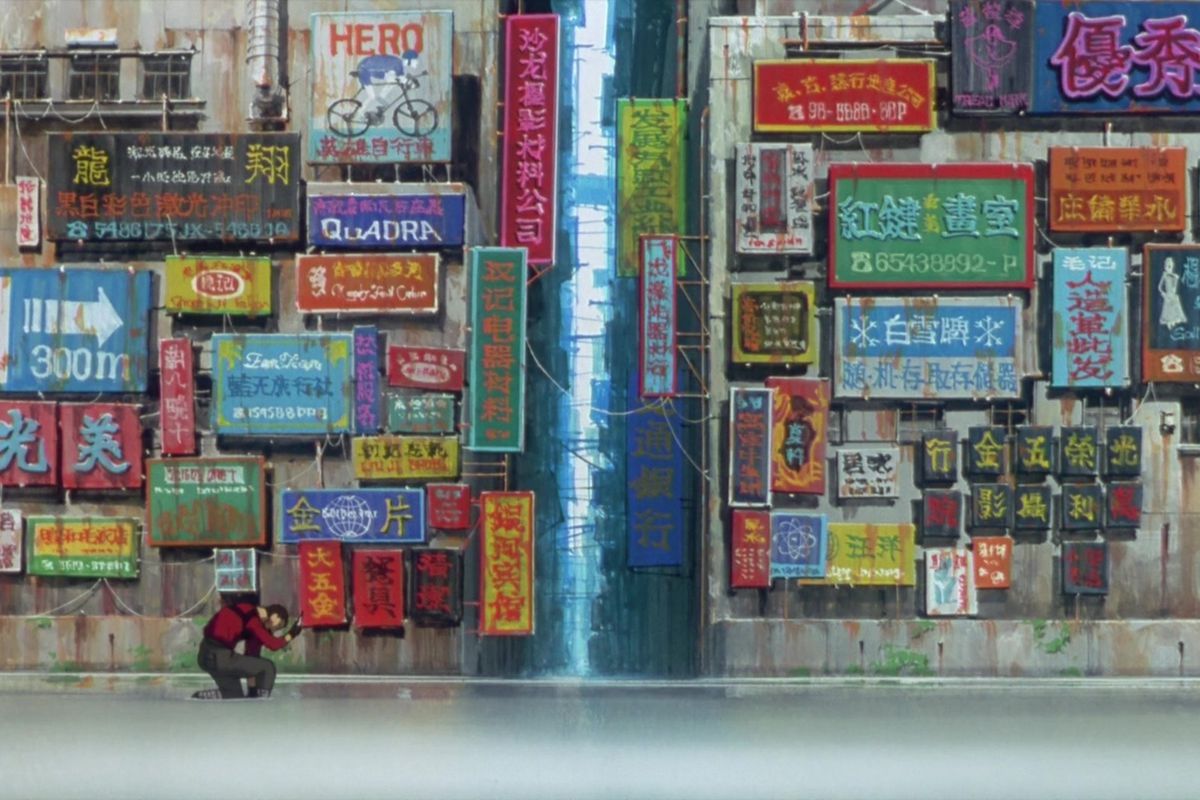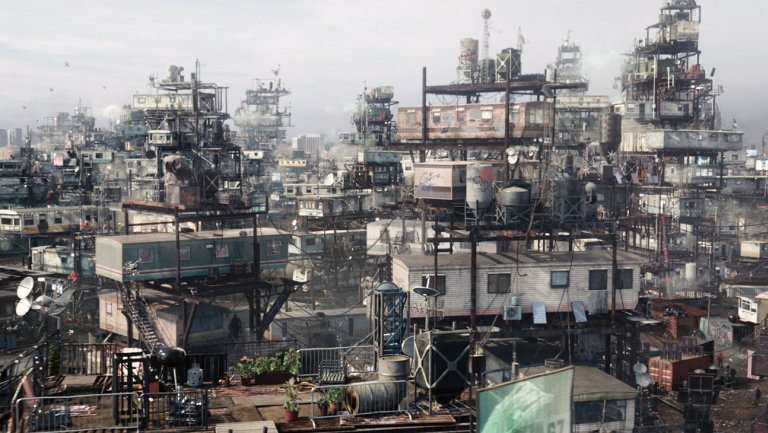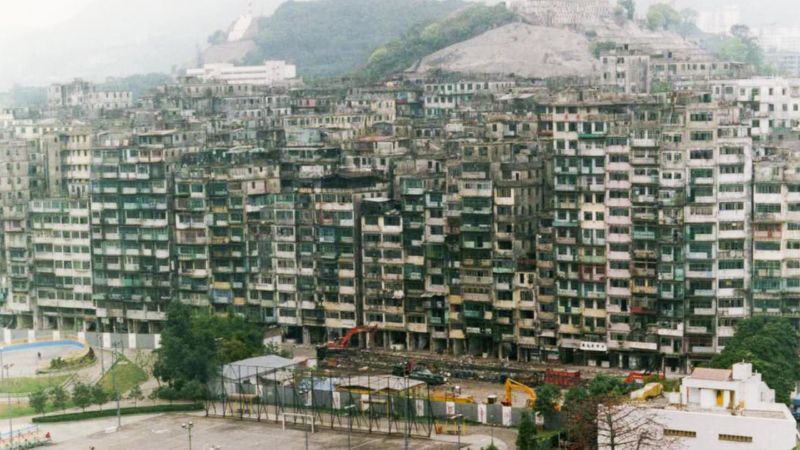
Figure.1 Hong Kong style street in Ghost in the Shell
In the reading Technology and (Chinese) Ethnicity, Darrell William Davis pointed out that Chinatown was strikingly becoming increasingly aligned with people’s imagination towards future city. He took Ghost in the Shell, a Japanese Cyberpunk movie whose scenes are mainly based in Hong Kong’s urbanscape, as an example to illustrate how the technology could shape our future city and influence ethnicities. From him, Iconographic Ethnicities like Hong Kong, could provide a visual grid for mapping new forms of new Information Technology. This is more related to the speculation about information explosion extending from now to future, which could be represented not just in codes or touch screens, but in a more seedy way – dazzling neon lights and crowded billboards are also telling a lot about the overloaded information in the future, as a mystical throwback to the past.

Figure.2 Columbus City in Ready Player One
Yet apart from aspect of new information technology evolution, Hong Kong also acts as a visual symbol in Cyberpunk movies in terms of its hyperdensity and inclusiveness, which is consistent with the population growth and immigration trend of our current world. Thus overloaded city with huge population becomes one classical setting in Cyperpunk works. For example, the Columbus city in Ready Player One, is a “hyperagglomeration” of squatters holding millions of people indulged in VR games. The future city, or even country, in Cyperpunk works, is decomposed and then reassembled in a much denser way, which almost makes a city like a huge and even creepy housing machine stacked by programs. And this kind of imagination on future, was once happening in Kowloon Walled City, the anarchic and self-sufficient enclave in Hong Kong, housing thousands of people with different backgrounds. The urban density and cultural inclusiveness in most areas of today’s Hong Kong, is also far beyond any other city in the world. Row upon row buildings and integrated culture formed by immigrants from all over the world make Hong Kong a prototype for Cyperpunk cities.

Figure 3. Kowloon Walled City
Hyperdensity brings prosperity to the city, but also worsens the gap between different social classes. In most Cyperpunk works, the conflict between grass root and power class is the main storyline, like the battle between replicants and real human in Blade Runner, or the rebellion from people against program in Matrix. These conflicts are based on the gap between rich and poor, power and bottom class in today’s society, especially on Hong Kong. Even with a high GDP, Hong Kong is inevitably suffering the extreme solidification of social wealth – the rich are getting increasingly richer, owning most wealth and welfare, yet bottom class are still struggling for a tiny habitat, which leads to an unstable society. Democratic movements happening in recent years are signals of the social-political instability. Therefore Hong Kong’s typical urbanscape, which consist of both grand skyscrapers, slums and caged flats, is often used to visualise the social conflicts and rebellions in Cyperpunk works.
In all, Hong Kong as one of the most developed city in the world, is holding both people’s ambitions and social problems along with social development. It is one step closer, in people’s imagination, towards the future world, which is mostly thought to be some Dystopia spaces in Cyperpunk movies.
By XU Ben Celine (UID: 3035329742)